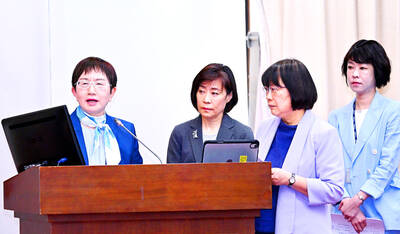China, India and Eastern Europe will increasingly take jobs away from the Western world's car workers over the next 10 years, as the automotive industry moves its parts-making operations from industrialized countries, the UN labor agency said Friday.
Factories in Japan, the US and Western Europe are becoming assemblers of finished cars from parts made in other countries, where labor costs are a fraction of those in the West, said the International Labor Organization in a 144-page study.
"The increasing importance of suppliers will benefit emerging markets, particularly Central and Eastern Europe, China and India, allowing them to increase their share of global components production," the report said.
Auto industry jobs will fall or stagnate in the big three auto-producing regions, but China's employment in the sector will rise 156 percent by 2015 and its workers producing auto parts will more than triple, the report said.
"The potential for companies in advanced countries to lower labor costs by outsourcing, coupled with the pressure to continuously reduce costs," means that the developing world is "where it is almost certain that employment in future years will increase the most," ILO said.
Many Western automobile producers "have begun to treat Chinese component costs as the global benchmark for their suppliers elsewhere," where auto-industry workers make anywhere from US$0.60 to US$1.30 an hour, ILO said.
Wages in the United States are up to 25 times higher.

‘SWASTICAR’: Tesla CEO Elon Musk’s close association with Donald Trump has prompted opponents to brand him a ‘Nazi’ and resulted in a dramatic drop in sales Demonstrators descended on Tesla Inc dealerships across the US, and in Europe and Canada on Saturday to protest company chief Elon Musk, who has amassed extraordinary power as a top adviser to US President Donald Trump. Waving signs with messages such as “Musk is stealing our money” and “Reclaim our country,” the protests largely took place peacefully following fiery episodes of vandalism on Tesla vehicles, dealerships and other facilities in recent weeks that US officials have denounced as terrorism. Hundreds rallied on Saturday outside the Tesla dealership in Manhattan. Some blasted Musk, the world’s richest man, while others demanded the shuttering of his

ADVERSARIES: The new list includes 11 entities in China and one in Taiwan, which is a local branch of Chinese cloud computing firm Inspur Group The US added dozens of entities to a trade blacklist on Tuesday, the US Department of Commerce said, in part to disrupt Beijing’s artificial intelligence (AI) and advanced computing capabilities. The action affects 80 entities from countries including China, the United Arab Emirates and Iran, with the commerce department citing their “activities contrary to US national security and foreign policy.” Those added to the “entity list” are restricted from obtaining US items and technologies without government authorization. “We will not allow adversaries to exploit American technology to bolster their own militaries and threaten American lives,” US Secretary of Commerce Howard Lutnick said. The entities

Minister of Finance Chuang Tsui-yun (莊翠雲) yesterday told lawmakers that she “would not speculate,” but a “response plan” has been prepared in case Taiwan is targeted by US President Donald Trump’s reciprocal tariffs, which are to be announced on Wednesday next week. The Trump administration, including US Secretary of the Treasury Scott Bessent, has said that much of the proposed reciprocal tariffs would focus on the 15 countries that have the highest trade surpluses with the US. Bessent has referred to those countries as the “dirty 15,” but has not named them. Last year, Taiwan’s US$73.9 billion trade surplus with the US

Prices of gasoline and diesel products at domestic gas stations are to fall NT$0.2 and NT$0.1 per liter respectively this week, even though international crude oil prices rose last week, CPC Corp, Taiwan (台灣中油) and Formosa Petrochemical Corp (台塑石化) said yesterday. International crude oil prices continued rising last week, as the US Energy Information Administration reported a larger-than-expected drop in US commercial crude oil inventories, CPC said in a statement. Based on the company’s floating oil price formula, the cost of crude oil rose 2.38 percent last week from a week earlier, it said. News that US President Donald Trump plans a “secondary